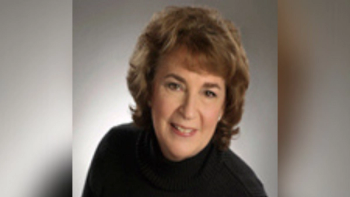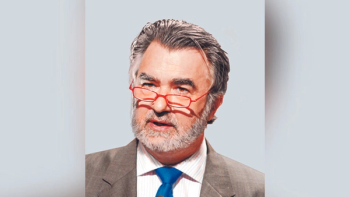
New Oncology Therapies Emerge Amidst COVID Pandemic
Cue Biopharma has managed to persevere through the COVID pandemic by employing a variety of strategies. President and Chief Scientific Officer, Anish Suri, and Ken Pienta, acting Chief Medical Officer discuss their experiences.
New immunotherapy disease platforms are emerging in a more targeted fashion for patients who have cancer. Current immunotherapies could cause severe and adverse immune responses that could put the patient’s safety at risk; however, Cue Biopharma, an emerging biopharmaceutical enterprise, is developing novel biologics that activate the immune system to kill cancer cells without triggering the entire immune system, thereby, avoiding adverse reactions caused by broad immune stimulation. Additionally, Cue Biopharma has managed to persevere through the COVID pandemic by employing a variety of strategies. In this interview, Anish Suri, President and Chief Scientific Officer, and Ken Pienta, acting Chief Medical Officer at Cue Biopharma, will discuss their experiences.
Moe Alsumidaie: Please describe how COVID-19 has impacted your autoimmune disease studies.
Anish Suri: From an internal operations perspective, COVID is a situation that none of us had anticipated, but I’m proud of the R&D organization and the way we navigated. We very quickly identified the critical projects in our labs in oncology and autoimmunity that we needed to keep going and focused on methods for personnel to come in and work in a socially distant manner with very regular and disciplined schedules when required for the bench related roles. For all others that could perform remotely, we made accommodations for them as well. This allowed us to execute without shutting down. We’re proud of how our clinical development has progressed, and much of this is due to Ken’s efforts as a significant driver of this work.
Ken Pienta: From a research perspective, COVID has devastated the oncology clinical trial enterprise in the US and around the world. The asset we have in the clinic, CUE-101, is an immunotherapy for patients with human papilloma virus-positive recurrent/metastatic head and neck squamous cell carcinoma (HPV+ HNSCC). The first thing we had to do was to work with our clinical sites to ensure that they would get our patients in for treatment. We were able to make it a high priority lifesaving drug for these patients, allowing us to give the therapy at our institutions.
We had to adjust because even though patients could come in for infusions, they were limited in their ability to come in for extra PK and PD blood draws, meaning that we had to adjust the kind of data we could get from some of the patients. While this limited what we could do with some of the patients, our primary endpoint was safety with our Phase I trial. We ensured that patients could get the drug safely, and we could monitor safety for the patients. As a result, we stayed on schedule for getting patients accrued to our trial, mainly because we were able to get the agent designated as a potentially lifesaving therapy.
We have adjusted our protocols to draw blood, for example, for PK/PD, from other sites besides the institutions, such as home or local facilities, and we adjusted our ability to do pre-screening and screening studies remotely. Pre-COVID, we required three serial EKGs, and since that couldn’t be done once the pandemic hit, we adjusted to one EKG. We had to adapt quickly, working with the institutions and with the IRBs to allow for remote monitoring and studies.
MA: How have the IRBs responded to the safety issues that could potentially expose the patients to COVID, and how have you addressed those issues?
KP: One of the big adjustments that the IRBs have made is to allow tele-video visits for monitoring and remote consent. We used to consent to everybody in person, and now most IRBs allow that to be done by telemedicine, which is a significant shift. We also had to put into the consent forms that patients could be monitored remotely, do blood draws, and other tests remotely. To accommodate for this, the IRBs adjusted almost uniformly across the institutions to the reality of COVID and the risk that it posed to these patients. As you know, cancer patients are more immunocompromised and the risk of them coming in multiple times for visits was higher than the risks associated with remote consenting and remote monitoring. Each study site is a little different, but practically all academic centers where the trial is conducted have switched to telemedicine for most of their visits. The only visits that are allowed are for patients to come in to get the infusion. Most sites do not let visitors go in with the patients, but the sites have responded that cancer patients need their treatments. That has led to most patients being treated on the day of infusion in-person, appropriately protected with personal protective equipment and safety precautions, and then they are monitored remotely for the rest of the visits.
MA: What were your risk mitigation strategies?
KP: As with any Phase I trial, 3+3 design, we always look for safety first, and we start at an appropriate dose that the FDA approves. Our drug, CUE-101, is a biologic with four molecules of an attenuated interleukin-2 (IL-2) attached to it. As a result, we were very cognizant of the potential for IL-2 toxicities and infusion type reactions. We were cautious about making sure that we were monitoring for these events, as the FDA was most concerned about these safety issues. We anticipated that our drug would be very safe and that we may not see a maximally tolerated dose, so we did something very unique for a Phase I study. We built the Bayesian approach into the 3+3 design, where we have the ability upon approval of our safety review committee, which is made up of all the principal investigators of our sites, to increase the size of any cohort up to nine patients from the usual three to not only look for pharmacokinetic markers but also pharmacodynamically effects of our drug at a particular dose. This would allow us to find the biologically effective dose while we were dose-escalating and determine the recommended Phase II dose. We explore safety in a 3+3 design and expand to look for the appropriate biologic and clinical endpoints beyond just three patients in a cohort.
MA: Please describe your inclusion/exclusion criteria approaches to maximize recruitment and enrollment potential.
KP: Our drug, CUE-101, is based on a precision medicine approach, meaning that it is explicitly designed to treat HPV16-driven head and neck cancer. All of the patients enrolled in this study must have a squamous cell carcinoma that is also positive for HPV16. We ensure that by looking for HPV in the tumor and staining for a marker associated with HPV infection called p16. On top of that, we have to recognize the major histocompatibility complex (MHC) of the patient’s T cells. These patients are pre-screened to be HLA-A*0201 positive, about 50% of the US population. Our pre-screening strategy allows us to identify patients suffering from a recurrence of their head and neck carcinoma to determine their eligibility for CUE-101 after their first-line therapy has failed. It’s a transparent precision medicine approach, and that is how we will continue to select patients for the trial.
AS: This speaks to an essential feature of our immunotherapy platform and the science behind it. The Immuno-STAT (Selective Targeting and Alteration of T cells) platform is designed to deploy the natural signals for a T cell response, honing the HLA molecules and the antigens. This selectivity and specificity offer an advantage over broad immunomodulatory approaches for cancer immunotherapy or general immunosuppression for autoimmunity. This allows us upfront to 1) identify the patients that are likely to respond and 2) implement a very targeted, selective, and specific approach for modulation of those therapies for the patient. That is part of what makes the drug safe compared to other techniques.
MA: How is your platform approach to therapy development different than some of the other biopharmaceutical enterprises?
AS: The basic premise we’ve come to recognize is that self-tissue underscores autoimmunity and a lack of immediate recognition of tumor antigens underscores susceptibility to cancers associated with chronic infectious diseases. But the approaches that we’ve developed to modulate these conditions have not focused on the small numbers of T cells specific for a tumor or the small numbers of T cells specific for self-antigen autoimmune diseases. Traditional approaches broadly activate the entire immune system with naked cytokines, particularly IL-2, which systemically activates the immune system as a whole, putting the patient at risk for systemic inflammation. Alternatively, autoimmune approaches, which include broad suppression of the immune system with the most archaic of therapies, including steroids, can lead to adverse side effects. Our platform was designed by a very sophisticated protein engineer, the co-founder of this company, Steve Almo, from the Einstein College of Medicine. He wasn’t contaminated with these ideas of broad activation or suppression of the immune system. He approached the problem as a protein engineer and identified the specific segments that a T cell is seeking. These are nature’s cues for immunity—hence the company’s name—those same cues were engineered as antibody fusion proteins.
By doing so, you no longer need to set the kitchen on fire to light the stove. You can do it in an exact manner. That is the differentiation for this platform, which activates the right signals needed to only those targets that matter. The vast majority of your immune system is focused on immunity, not tumor antigens and self-antigens, so activating or modulating them has no impact. If anything, it increases liability and toxicity concerns. Also, rather than making surrogates of proteins that mimic a signal, we deploy the very natural biological signals that the T cell is seeking. These are the natural components that T cells would have encountered in nature to be activated that we’ve taken to create biologics.
Most importantly, we have engineered biologics directly injected into the patient with no need for ex vivo manipulation. This is a more pharma-friendly approach than cell-based therapies in oncology, which involves cumbersome ex vivo manipulation and expansion of T cells that have to be reinfused back into the patient. All of that ex vivo burden is no longer the issue with CUE-101 because this biologic essentially does everything in vivo, in the patient.
Moe Alsumidaie, MBA, MSF, is a thought leader and expert in the application of business analytics toward clinical trials, and Editorial Advisory Board member for and regular contributor to Applied Clinical Trials.
Newsletter
Stay current in clinical research with Applied Clinical Trials, providing expert insights, regulatory updates, and practical strategies for successful clinical trial design and execution.




